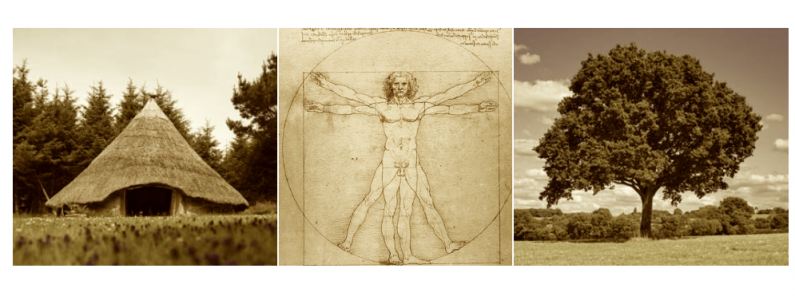It will have escaped no one, that Germanic languages, such as English and German, have a very irregular conjugation of the verb to be. In English there is to be in the infinitive, but I am in the first person of the singular and then, out of nowhere, he/she is in the third person. None of these forms seem to have any logical relationship deserving the name of conjugation. And things do not get better when we turn to the past, where we seem to be dealing with another verb altogether: I was and you were. German has a slightly different but equally perplexing conjugation of the verb to be, which has the infinitive sein, a form that appears to be most closely related to the English is. But in the first person this suddenly turns into ich bin. This base with the initial b is still found in the second person du bist, but then, just when we thought some clarity was emerging, our hopes of seeing a pattern being established are dashed, when we reach the third person er/sie ist, which clearly is formed on the same base as the same person in English and not on the one used to form the two previous persons in German. Just as in English, the past of the verb is formed on a base with an initial w: ich war, du warst er war are the first three persons of the present.
This is in sharp contrast with the state of affairs in the romance languages, such as French and Italian, and the classical languages Latin, ancient Greek and Sanskrit. In French the conjugation of the verb to be is built entirely on one root: je suis, tu es, il/elle est, in the singular, and nous sommes, vous êtes, ils sont in the plural. Although the forms are subject to certain fluctuations that cannot be discussed here, no one would object to the idea that all persons of the French verb are essentially formed on the same base containing an s. If the German and English conjugations are not utterly lost to logic, then the third person of both these languages – he/she is and er/sie ist – must be derived from the same base. The nearly identical French and German est and ist puts this beyond doubt.
The purest form of the verb to be constructed on this base containing an s is to be found in ancient Greek and Sanskrit. In Sanskrit the root for to be is अस्, from which are formed the singular forms: अस्मि (asmi), असि (asi) and अस्ति (asti). This corresponds very closely to the Greek singular built on the same root: εἰμί (ēmi), ἐσσί (essi) and ἐστί (esti). This is the original root for the description of the process to be, i.e. to exist. It is from this root that the German infinitive sein and the English and German third person singular is and ist are derived. It now becomes clear that the irregularities of the Germanic verb to be are probably due to it being of composite nature, i.e. selectively constructed from several different roots, which would originally each have had a conjugation and a meaning of their own.
If this is true, can we find the other roots, turning up here and there in the persons of the Germanic conjugation, in Greek and Sanskrit as well? And can we find out more about their original meaning in doing so? The answers to both these questions are positive. Two other roots seem to appear in the Germanic conjugation of to be: one having an initial b, the other an initial w. The first of these is the Sanskrit root भू (bhū). In Sanskrit it has no distinct meaning from the root अस्, both are interchangeably used for to be. In Greek this root is represented by the verb φύω (phūō), which means to grow, and this is commonly believed to be the more original of the two meanings. It is from this root that the word physique is derived, which is φύσις (phūsis) in Greek, lit. the way someone has grown. Sanskrit seems, just as the Germanic languages, to have felt a very close similarity between the ideas of to be and to grow and therefore started to use both roots interchangeably, while, as opposed to the Germanic languages, keeping two separate and complete conjugations of the two roots.
What then of the third root with an initial w? This is found in Sanskrit as the root वस् (vas), meaning to dwell or inhabit. The early speakers of Germanic must have felt a similar connection between to be and to inhabit, as between to be and to grow. This is not surprising, since all three describe fundamentally defining aspects of human life, i.e. being on earth: the consciousness of one’s own existence, the need for a place to call home in order to have an identity within the landscape, and the awareness that all human existence is subject to the same cycle of growth and decay as visible in the woods and the fields. This gradually led to a fusion into one of three originally distinct meanings and to the composition of the very irregular paradigm of the verb to be in English and German.
Silvio Zinsstag,
teacher for ancient languages

